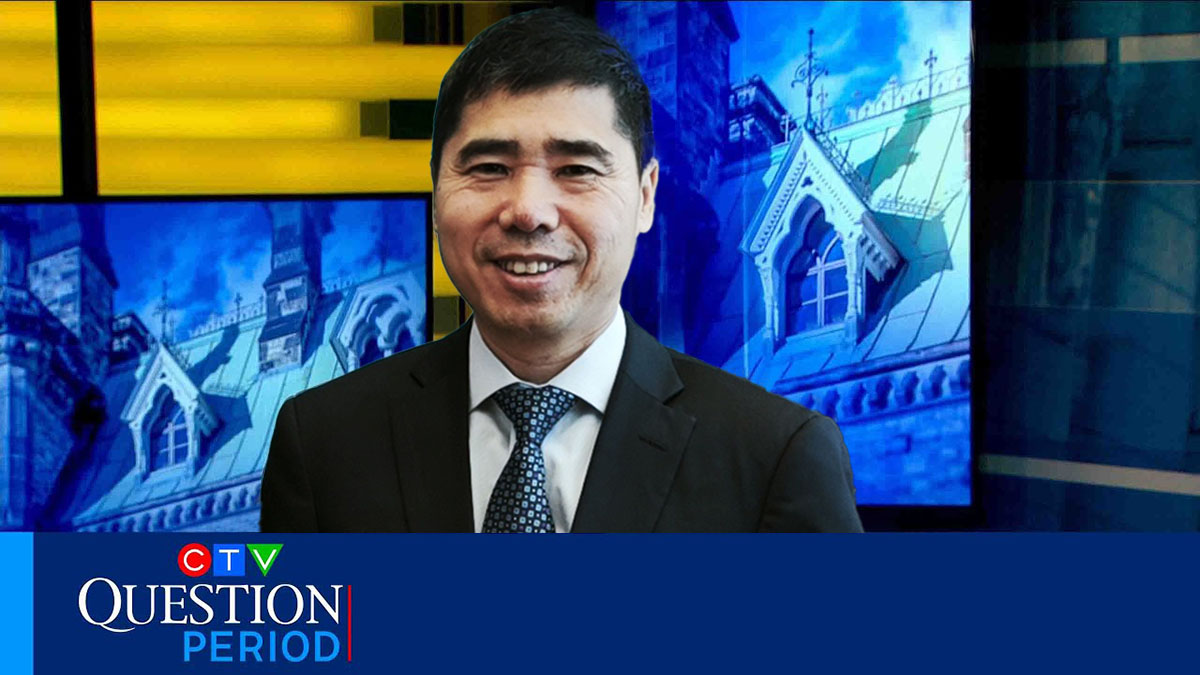
OLG willfully ignoring federal anti-money laundering rules
OLG appears to be operating casinos in violation of the federal Proceeds of Crime (Money Laundering) and Terrorist Financing Act. The question is, why is no one doing anything about it?
According to its annual report, Ontario Lottery and Gaming Corporation or OLG is responsible for conducting and managing 37 Charitable Gaming Centres operated by service providers across Ontario. In addition to the classic paper-based play, these sites offer a variety of bingo and break-open ticket games in electronic formats.” It’s big business. The net benefit since cGaming launched in fiscal 2005-06 tallies to $310 million in support of 2,200 charities.
Over the last four years, many of what were once old-fashioned bingo halls have evolved into what are now promoted as “Vegas style casino gaming” establishments. One such cGaming operation offers two suburban venues in the Greater Toronto Area (GTA), where “the atmosphere is teeming with excitement from sights and sounds of people laughing, winning jackpots and the dazzling displays and sounds of the Las Vegas style games.”
“Vegas-style” games is a euphemism for slot machines. Traditional parish-basement bingo winnings pale compared to machines that promote “Progressive Jackpots: Wheel Of Fortune – $37,500+ !!!” Traditional paper-and-tumbling-balls bingo has been sidelined if offered at all at these cGaming halls, which today attract customers by offering thrills on gaming machines that are indistinguishable from those found on big-time casino floors.
The problem is that these charitable gaming sites are operating as de facto mini casinos without appropriate levels of regulatory oversight. That was never the intent of provincial gaming policy. They don’t comply with requirements aimed at thwarting money laundering. The communities that host them were never asked whether they wanted casinos in their midst, nor are they receiving any money from revenue share agreements that OLG pays to the 27 municipalities who knowingly host casinos. (In Q3 2021, those revenue transfers amounted to a whopping $30,510,269.) How is this possible?
Part of the answer lies in the convoluted history of gaming regulation in Ontario and the relationship, at times fraught, between The Alcohol and Gaming Commission of Ontario (AGCO) and OLG. The other part rests on a technical ruse, the assertion that the slots in cGaming establishments are something called Class II slot machines.
Class II slot machines first appeared in what are called “Tribal casinos” in the US, where traditional bingo was offered in large halls as the only legal gambling option. Decades ago, the biggest casino gaming manufacturers got involved and created what are now known as Class II slot machines as a method of circumventing the rules that prohibited slot machines from being used in these locations.
Regardless of this subtle shift in classification, all electronic gaming machines in Ontario are made by the same manufacturers (for example, IGT and Scientific Games, aka Light & Wonder Inc.) and come decked out with the same tantalizing game themes like Cleopatra and Siberian Tiger found on every casino floor in North America. As far as the player is concerned, the experience of a Class II slot machine is exactly the same as the slot machine they play in the big OLG casinos. The only difference is an invisible one and is found in the underlying math.
Technically, the pay-out algorithm for the Class II slot machines used in cGaming is mathematically modelled on bingo or break-open ticket win probabilities versus the random number generation (RNG) software that determines slot machine payouts. As a sop to this conceit, players used to see a tiny LED bingo card in the corner of the screen that shows results with each spin, but in most cases, that faux bingo card representation has now disappeared.
In terms of action or outcome, there is fundamentally no difference between playing against an algorithmic pool of players bingo-style or playing against the RNG-determined one-armed bandit. Yet shockingly, the OLG does not hold Class II slot machines and their host venues accountable to the same regulatory controls as regular casino slots, and the AGCO has no jurisdiction over them in practice as the OLG self-regulates cGaming locations. That places these mini casino cGaming establishments outside of reporting requirements for suspicious activity and anti-money laundering safeguards, which is a huge problem.
Discreetly tucked away behind our everyday financial transactions is the gob-smacking constellation of regulations and watchdogs that keep our money and our country safe. The government of Canada agency tasked with gathering the data and monitoring these matters is the Financial Transactions and Reports Analysis Centre of Canada (FinTRAC).
FinTRAC was established in 2000 under the Proceeds of Crime Act with the mandate to detect and investigate money laundering schemes. It was expanded in 2001 to allow for the disclosure of suspected terrorist financing activities to other financial intelligence and law enforcement agencies. FinTRAC's mandate grew again in 2006 to enhance client identification, record-keeping, and reporting measures and establish a registration system for money services businesses and foreign exchange dealers, with penalties for not registering.
Under the federal Proceeds of Crime (Money Laundering) and Terrorist Financing Act (PCMLTFA), the definition of a casino includes “games operated on or through a slot machine or similar electronic gaming device, located at a fixed place of business, where there are more than 50 machines or similar devices in the establishment.” FinTRAC requires that “Casinos must implement a compliance program. A strong compliance program will form the basis of meeting all your regulatory requirements,” as defined by PCMLTFA.
A quick survey of the cGaming establishments listed on the OLG website shows that 90% of these venues have 50 or more Class II slots. The bigger ones, like the two located in the GTA suburbs, have at least 200 machines. Therefore, they should be meeting all PCMLTFA/FinTRAC requirements because, as far as the Proceeds of Crime (Money Laundering) and Terrorist Financing Act is concerned, they are casinos and should be complying with federal law. They are not, and OLG has been knowingly out of compliance with Anti Money Laundering regulations for years.
One explanation for OLG’s continued inaction may be found here: In its most recent “Value-for-Money” audit of the AGCO, released in December 2020, the AG flagged multiple causes for concern regarding money-laundering, the process by which large amounts of ‘dirty’ funds generated by criminal activity, such as drug trafficking or terrorist funding, is made to appear ‘clean’ and to have come from a legitimate source. This is necessary because all transactions must pass at some point through the financial system.
Money laundering is a serious financial crime perpetrated by white-collar and street-level criminals alike to fund all kinds of nasty stuff. Dirty money is made clean in a variety of ways, including through casinos, where many instances of money laundering have been well documented by provincial Commissions in British Columbia and Quebec.
Ontario is not unaware of its money laundering issues.
According to a recent OLG annual report, combating money laundering is the Minister’s top priority:
The [nine] priorities for the 2020–21 fiscal year outlined by the Minister in his mandate letter to OLG included:
1. Continuing work with service providers, regulators, and law enforcement to support the prevention of money laundering in casinos
Casinos are required to report four types of suspicious activity that signal potential money laundering to FinTRAC. Large transactions, meaning over $10,000 made in cash by an individual within a 24-hour period (one transaction or several), are red-flagged, as are electronic fund transfers for transactions over $10,000 made, sent, or received internationally by an individual within a 24-hour period (one transaction or several). Suspicious transaction (or attempted transaction) reports are filed when casino employees suspect money laundering or terrorist financing, such as when an individual declares their occupation as a student, for example, but wagers large amounts, although it is unclear how employees can determine when money laundering or terrorist financing is actually occurring. Finally, when the casino gives out winnings over $10,000 to an individual either in a single transaction or in multiple transactions within a 24-hour period.
None of this tracking and reporting happens in the context of cGaming casinos. Moreover, as of March 2020, 67 OPP officers worked at the AGCO bureau investigating suspicious transaction reports. There are no comparable OPP staff monitoring cGaming mini casino sites.
FinTRAC has 137 full-time staff on its compliance team and 116 employees dedicated to analyzing and disseminating financial intelligence, with an annual budget of $28 million. In 2019-20, FinTRAC received 386,102 STRs from businesses across Canada, in addition to the millions of other financial reports it receives about large cash transactions, electronic funds transfers, and cross-border currency movements. As if its hands weren’t already busy, FinTRAC is currently assuming full responsibility for compliance examinations of Federally Regulated Financial Institutions formerly undertaken by the Office of the Superintendent of Financial Institutions.
FinTRAC may well be pleased that it is not currently called upon to evaluate suspicious transaction reports from the province’s charitable gaming sector. But that doesn’t change the fact that it should be receiving them. Nor does it let the OLG off the hook for failing to comply with the law requiring them.
The public should be concerned, given what a crapshoot OLG regulatory compliance in the cGaming sector has been to date. The fact that this problem has persisted for years and that OLG has willingly turned a blind eye to resolving the federal and municipal dimensions of this problem does not instill much confidence as the province embarks on its newest regulatory adventure, that of a private regulated market for online gaming which launches April 4, 2022.
Perhaps the glaring contradictions in the treatment of Ontario’s cGaming sector mini casinos can be chalked up to that oldest of gambling adages: namely, “the house always wins.”
PHOTO: ISTOCK








